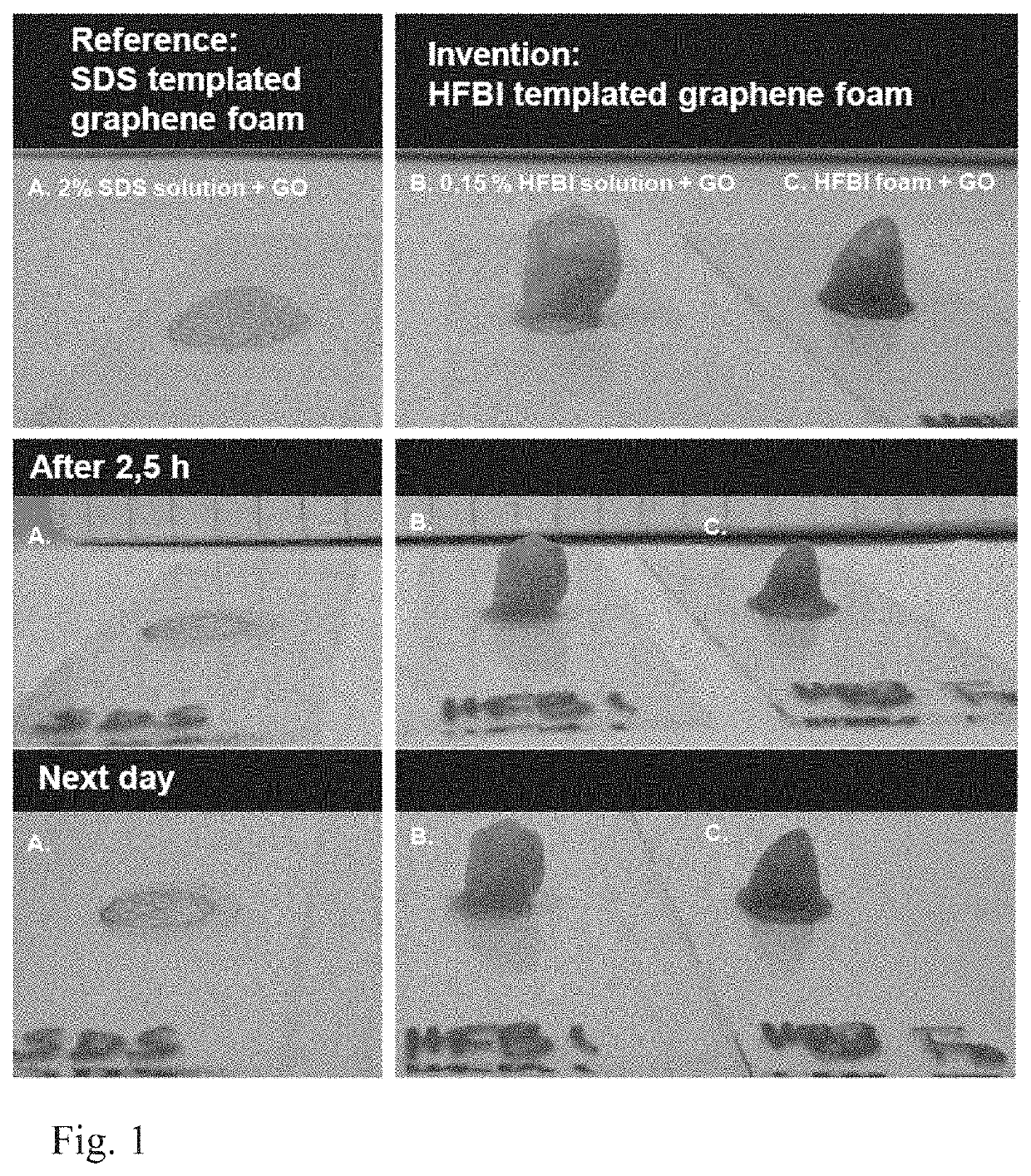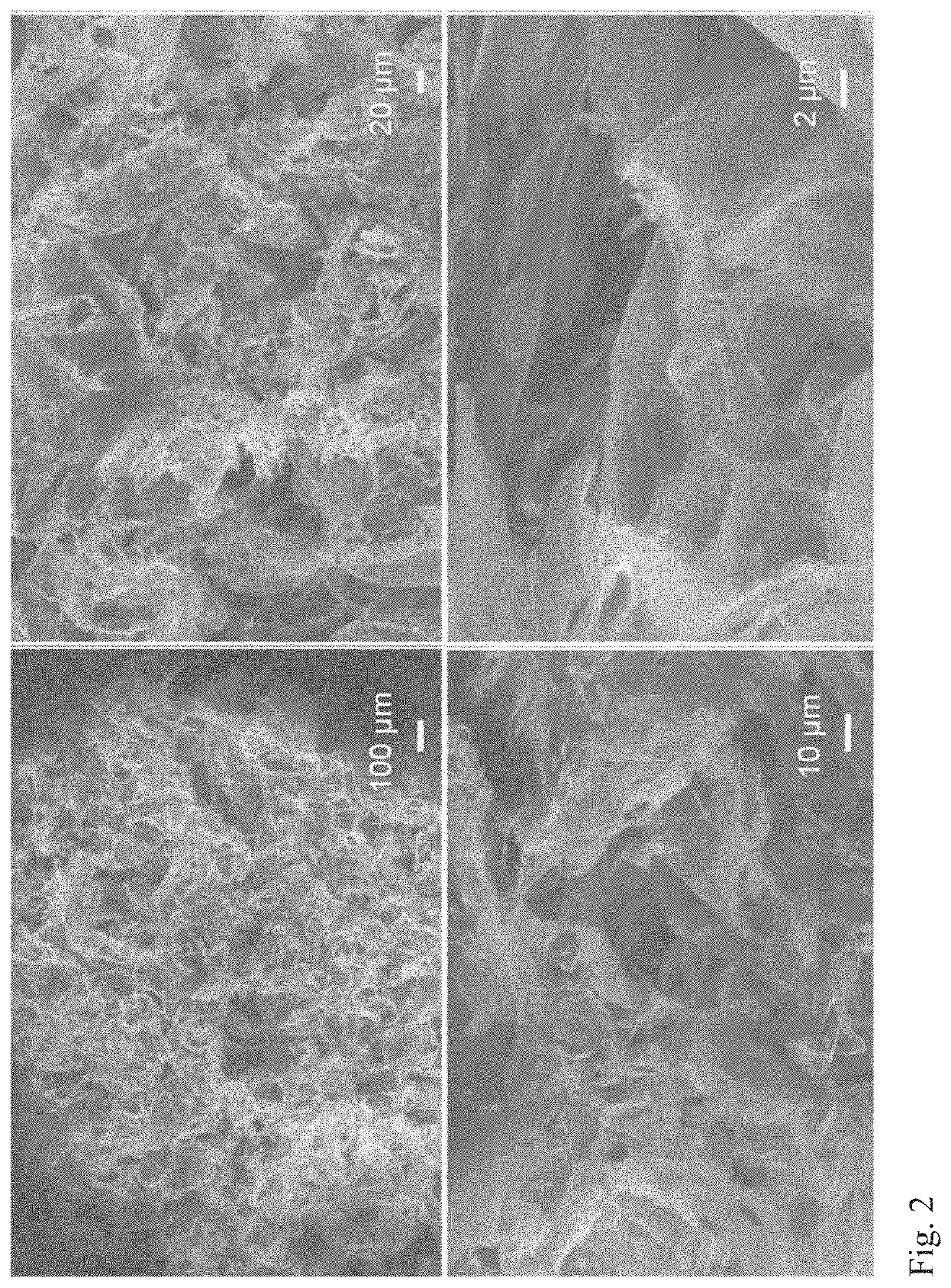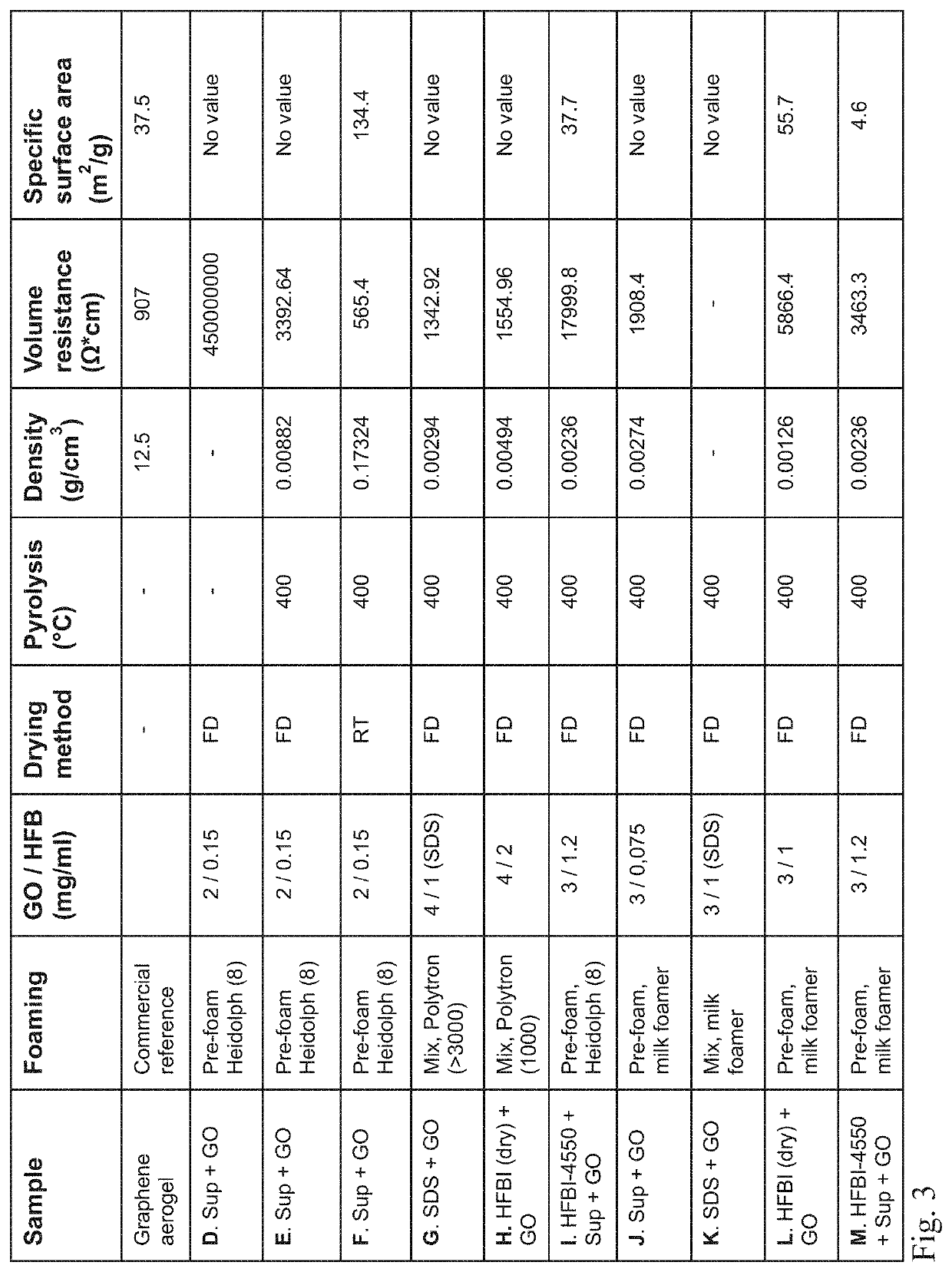Production of graphene structures
a graphene structure and graphene technology, applied in the direction of nanosensors, chemistry apparatuses and processes, peptides, etc., can solve the problems of unstable structure of sds template, requiring rapid lyophilisation, and fixation of structure still requires specialized freezing techniques, so as to improve processability and modification possibilities, cost-effective process choices, and broaden usability
- Summary
- Abstract
- Description
- Claims
- Application Information
AI Technical Summary
Benefits of technology
Problems solved by technology
Method used
Image
Examples
Embodiment Construction
[0031]In the present context, “graphene” refers generally to material that consists essentially of a one-atom-thick planar sheet of sp2 bonded carbon atoms. In graphene, the carbon atoms are densely packed in a honeycomb crystal lattice.
[0032]“Graphene foam” and “graphene foam structure” refer generally to three-dimensional cellular graphene structures consisting of two-dimensional graphene nanosheets. In embodiments of the invention, “graphene foam” or “graphene foam structure” may refer also to wet graphene oxide foams obtained by method of the invention.
[0033]“Graphene oxide” refers to oxidized form of graphene, a single-atomic layered material laced with oxygen-containing groups. Graphene oxide is easily dispersed in water and other organic solvents, and has a low electrical conductivity.
[0034]“Biomolecular surface active agent” refers generally to surface active proteins, for instance natural proteins from fungi or any modified or synthetically produced polypeptide that is func...
PUM
| Property | Measurement | Unit |
|---|---|---|
| concentration | aaaaa | aaaaa |
| concentration | aaaaa | aaaaa |
| temperature | aaaaa | aaaaa |
Abstract
Description
Claims
Application Information
 Login to View More
Login to View More - R&D
- Intellectual Property
- Life Sciences
- Materials
- Tech Scout
- Unparalleled Data Quality
- Higher Quality Content
- 60% Fewer Hallucinations
Browse by: Latest US Patents, China's latest patents, Technical Efficacy Thesaurus, Application Domain, Technology Topic, Popular Technical Reports.
© 2025 PatSnap. All rights reserved.Legal|Privacy policy|Modern Slavery Act Transparency Statement|Sitemap|About US| Contact US: help@patsnap.com



